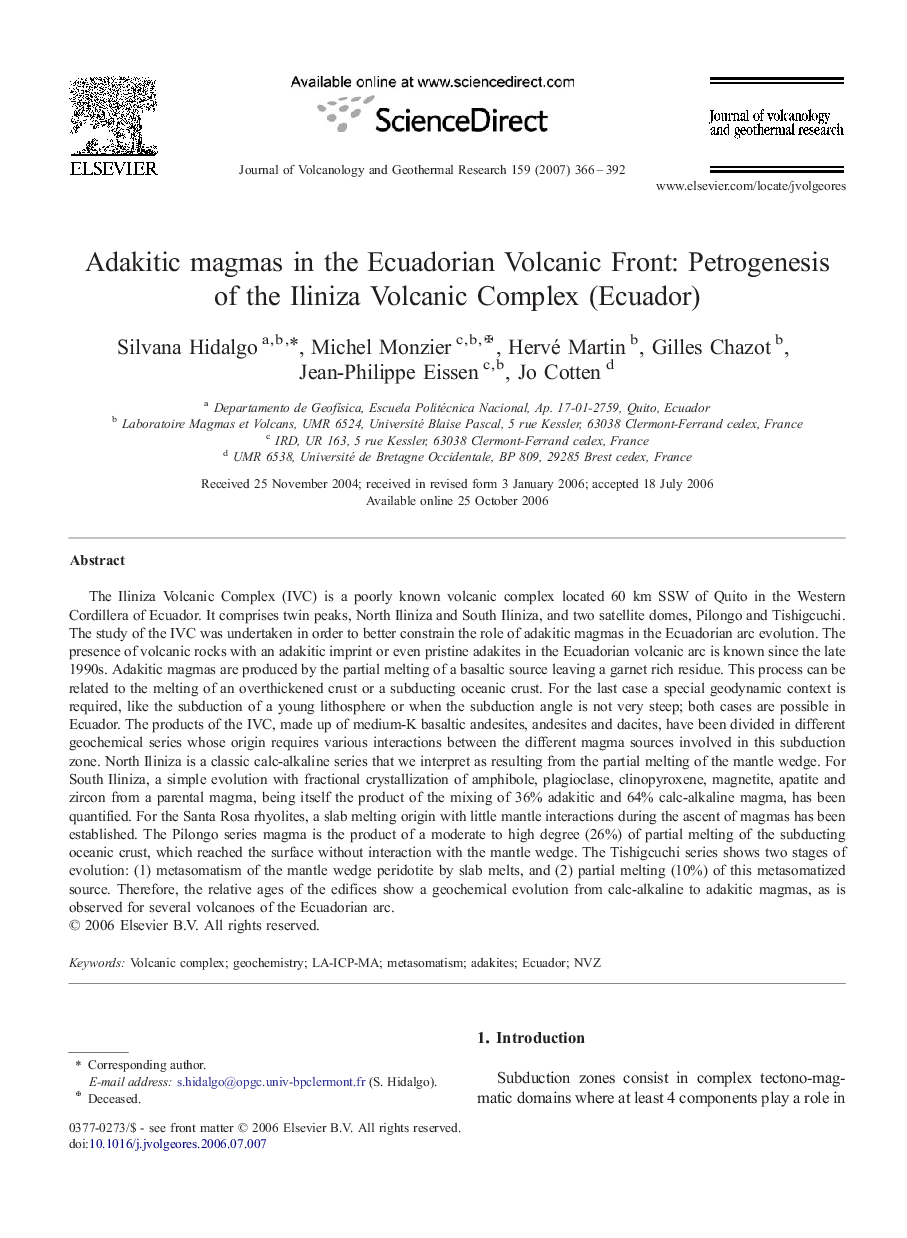| کد مقاله | کد نشریه | سال انتشار | مقاله انگلیسی | نسخه تمام متن |
|---|---|---|---|---|
| 4714087 | 1353940 | 2007 | 27 صفحه PDF | دانلود رایگان |

The Iliniza Volcanic Complex (IVC) is a poorly known volcanic complex located 60 km SSW of Quito in the Western Cordillera of Ecuador. It comprises twin peaks, North Iliniza and South Iliniza, and two satellite domes, Pilongo and Tishigcuchi. The study of the IVC was undertaken in order to better constrain the role of adakitic magmas in the Ecuadorian arc evolution. The presence of volcanic rocks with an adakitic imprint or even pristine adakites in the Ecuadorian volcanic arc is known since the late 1990s. Adakitic magmas are produced by the partial melting of a basaltic source leaving a garnet rich residue. This process can be related to the melting of an overthickened crust or a subducting oceanic crust. For the last case a special geodynamic context is required, like the subduction of a young lithosphere or when the subduction angle is not very steep; both cases are possible in Ecuador. The products of the IVC, made up of medium-K basaltic andesites, andesites and dacites, have been divided in different geochemical series whose origin requires various interactions between the different magma sources involved in this subduction zone. North Iliniza is a classic calc-alkaline series that we interpret as resulting from the partial melting of the mantle wedge. For South Iliniza, a simple evolution with fractional crystallization of amphibole, plagioclase, clinopyroxene, magnetite, apatite and zircon from a parental magma, being itself the product of the mixing of 36% adakitic and 64% calc-alkaline magma, has been quantified. For the Santa Rosa rhyolites, a slab melting origin with little mantle interactions during the ascent of magmas has been established. The Pilongo series magma is the product of a moderate to high degree (26%) of partial melting of the subducting oceanic crust, which reached the surface without interaction with the mantle wedge. The Tishigcuchi series shows two stages of evolution: (1) metasomatism of the mantle wedge peridotite by slab melts, and (2) partial melting (10%) of this metasomatized source. Therefore, the relative ages of the edifices show a geochemical evolution from calc-alkaline to adakitic magmas, as is observed for several volcanoes of the Ecuadorian arc.
Journal: Journal of Volcanology and Geothermal Research - Volume 159, Issue 4, 15 January 2007, Pages 366–392